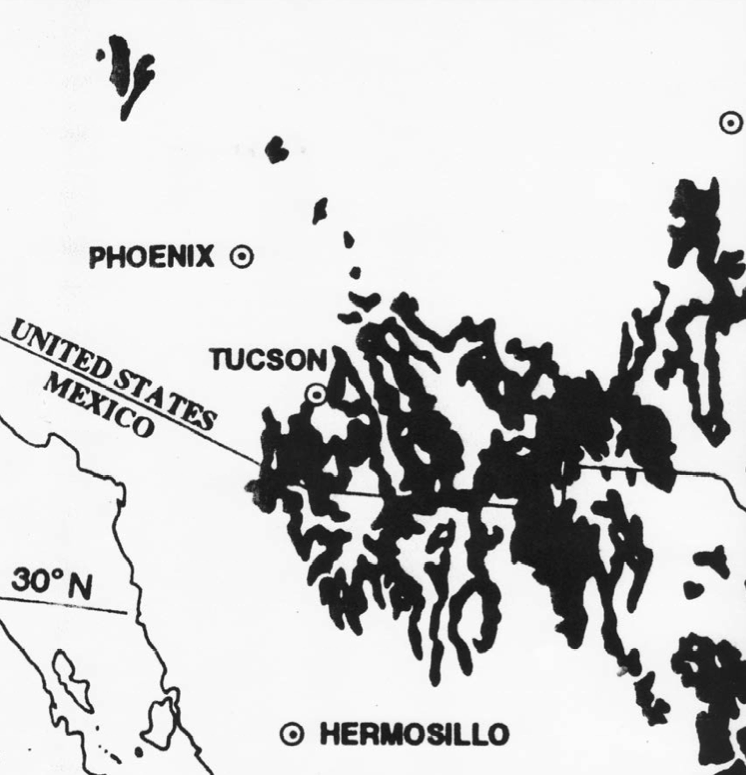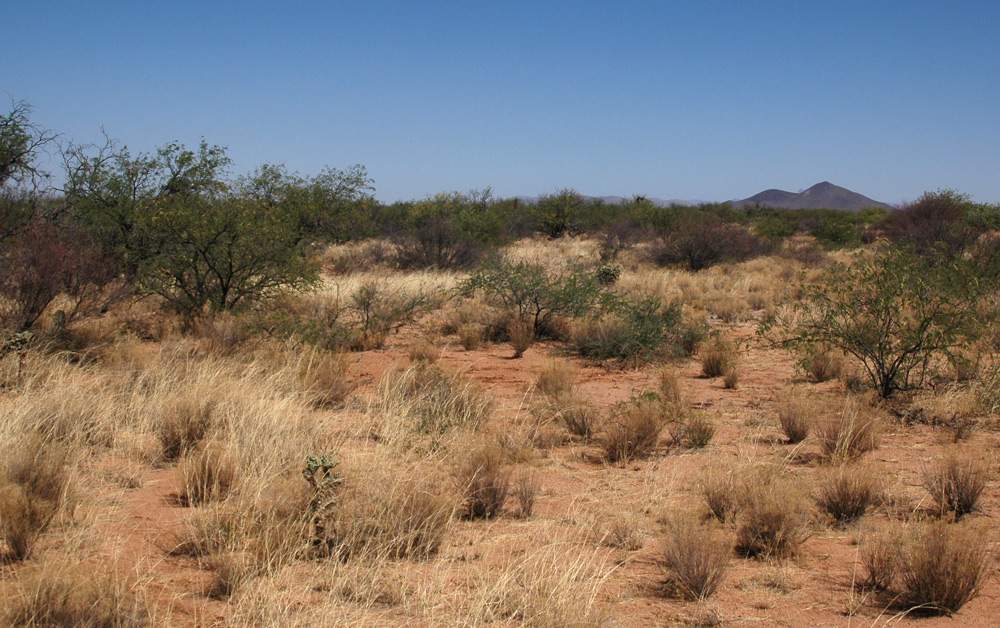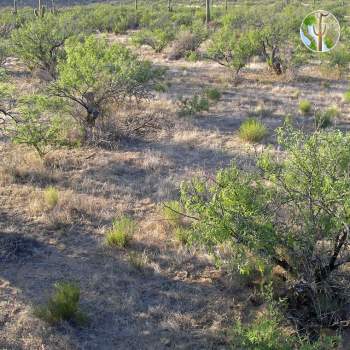Semi-desert Grasslands
Semi-desert grasslands are characterized by a mixing of grasslands with certain desert associated species. True grasslands cannot thrive in these areas usually because they are either too dry, don't have the right soil, or have lost their rich topsoil. Usually semi-desert grasslands are too cold and high in elevation for many common Sonoran Desert species.
Semi-desert grasslands in our region are a bunch grass dominated, yet sparse grassland with numerous interspersed trees (often velvet or honey mesquite) and a few shrubs and/or cacti (including the saguaro where winter freezing is not too severe). Some areas have been converted from pure grassland to this type (as well as to pure shrubland) due to elongated periods of grazing and especially associated topsoil and moisture loss. Non-native grasses, especially lehmann's lovegrass (Eragrostis lehmanniana), have been seeded and invaded many of our desert grasslands.
A great example of semi-desert grasslands is in the Buenos Aries Wildlife Refuge southwest of Tucson. It is slowly being actively and passively restored from historical grazing damage.



